Coarse/Fine Potentiometer adjustment
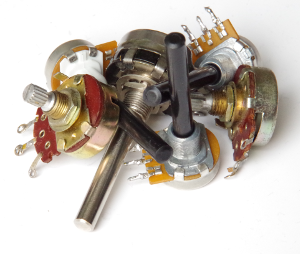
For many electronic projects you need potentiometers with very fine adjustment range. But sometimes
you need a coarse adjustment instead. Now what happens if you need both at once?
This is for example the case for many regulated laboratory bench power supplies and the standard
approach is to use high precision 10-turn-potentiometers which are cheap and economic, but sometimes
hard to find in the desired resistance. Another drawback is that they don't allow to turn down
the setting very fast if panic is at hand.
Every person that worked with high power supplies learned sooner or later that things burn up quite quick at
high Amperes or Voltages and you might run into the case that you have to shut down the voltage or current limit very quickly.
A possible solution is to add separate coarse/fine potentiometers stacked in serial (or I-shape connection).
You can use standard (linear) potentiometers which are cheap and available in many different resistances.
Standard Coarse/Fine in serial or I-shaped connection

You can see easily in the chart below that this configuration has a nice fine regulation range of approx. 10% at the upper end but zero at the bottom end. The blue lines depict the voltage at the div(ider)-output in relation to the input voltage for 0%, 50% and 100% fine setting over the coarse setting (in percent). The orange lines show the total resistance of the configuration for 0%, 50% and 100% fine setting.
Fine adjustment range over coarse setting for typical I-shaped coarse/fine potentiometers:
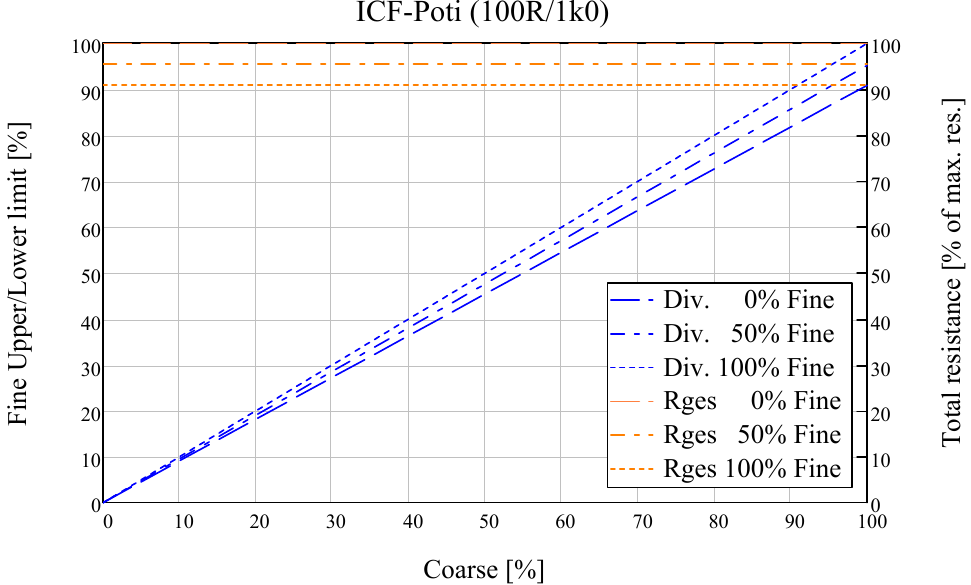
Extended Coarse/Fine with dual gear (stereo) fine potentiometers in serial or I-shaped connection
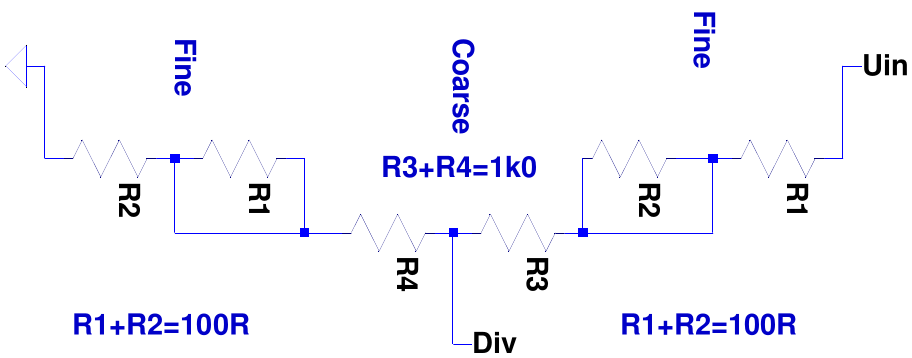
Fine adjustment range over coarse setting for dual geared I-shaped coarse/fine potentiometers:
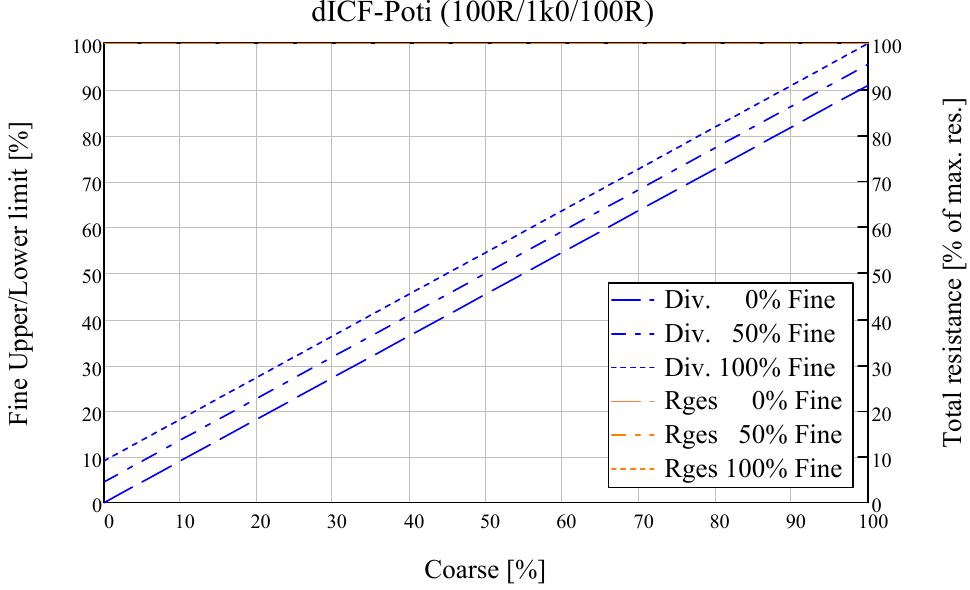
Coarse/Fine with standard potentiometers in H-shaped connection
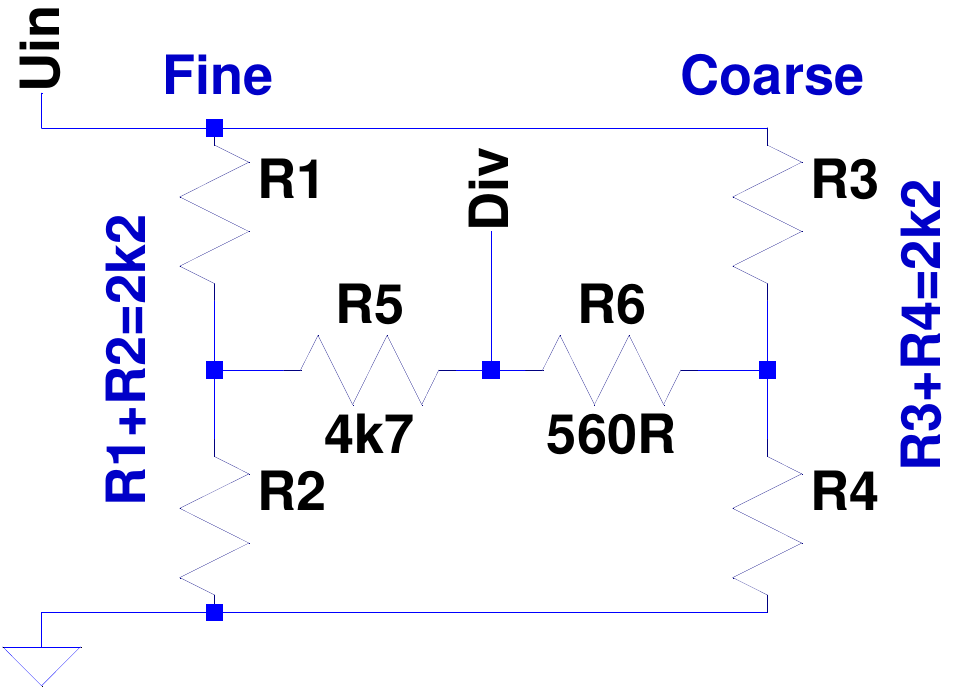
Fine adjustment range over coarse setting for H-shaped coarse/fine potentiometers:
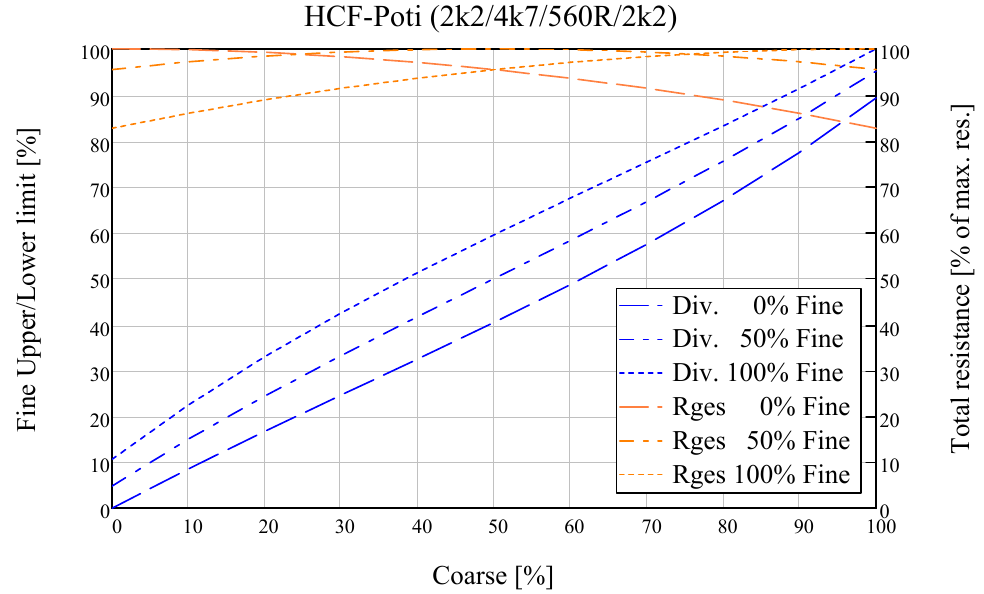
I used this connection for the voltage adjustment in my [30V/10A bench power supply] design and also measured the actual fine adjustment range:

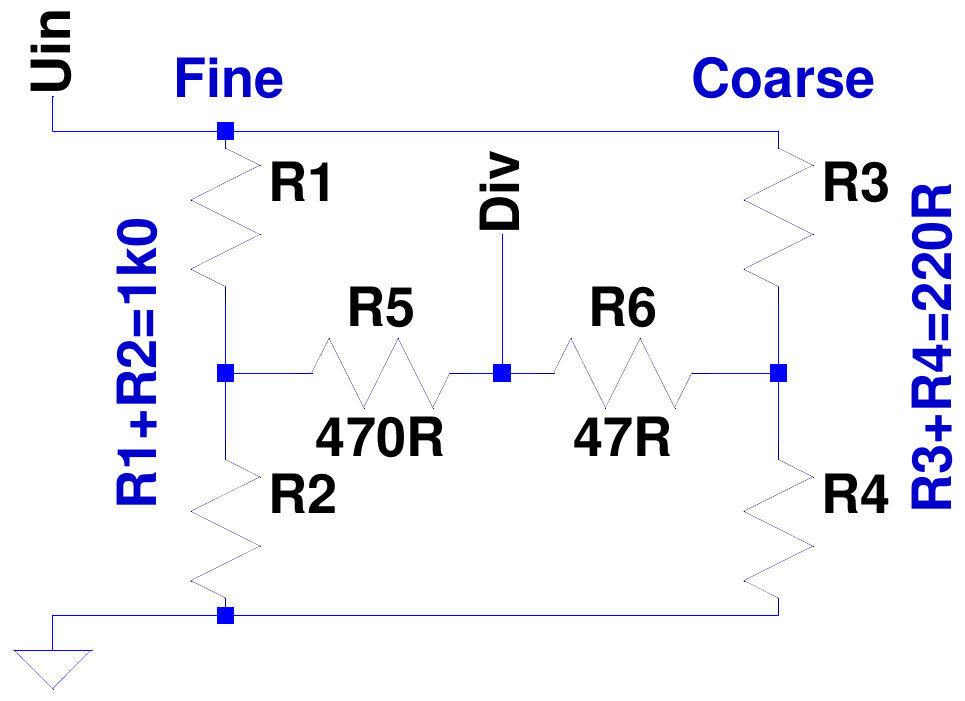
Fine adjustment range over coarse setting for H-shaped coarse/fine potentiometers:
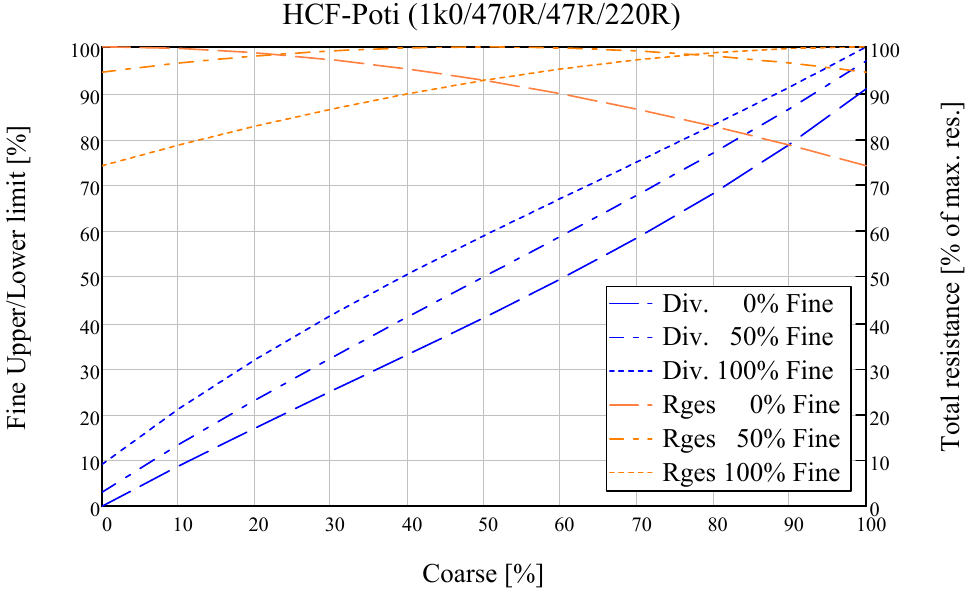
This variant was also measured in practice for the fine adjustment range:

The divergence between the calculation and the measurement stems probably from the other parts connected in parallel to the potentiometer H-shape.
[Back...]